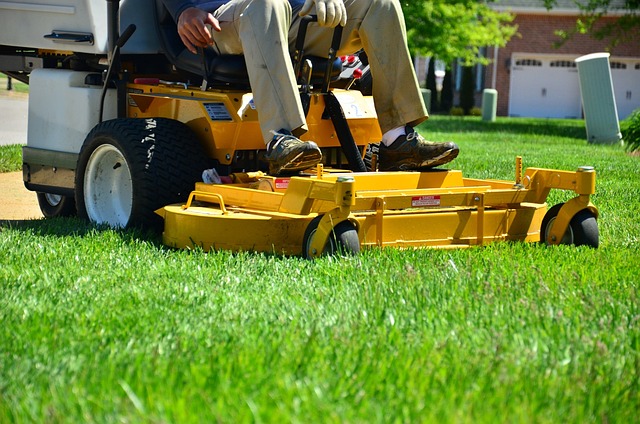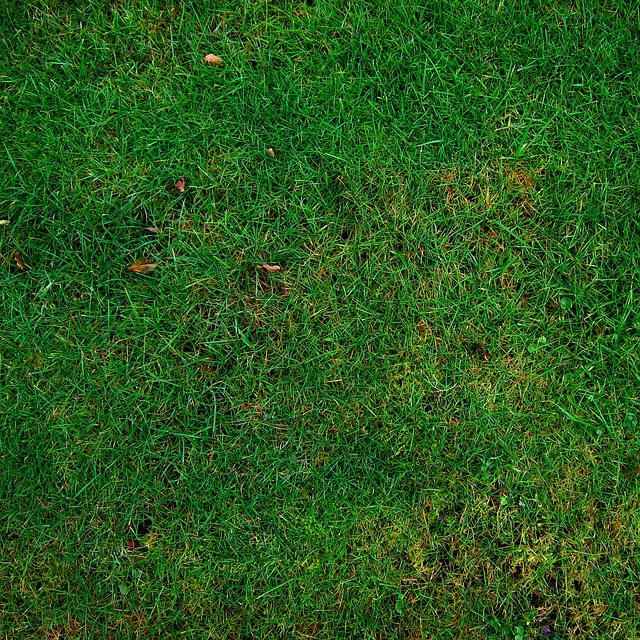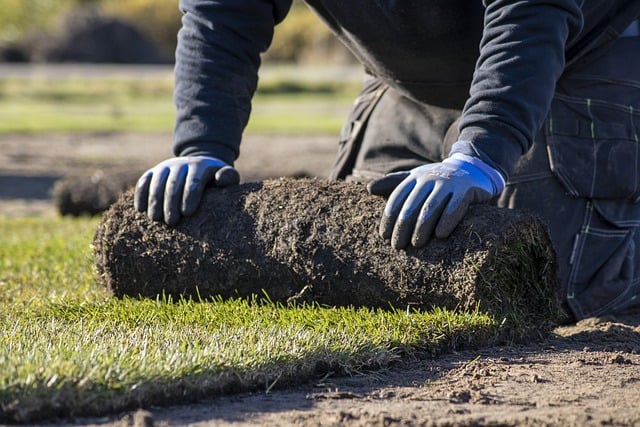Lawn fertilization and targeted weed control are vital practices in Lawn Care and Landscaping. Fertilizers enrich soil with nitrogen, phosphorus, and potassium, promoting grass growth and deep root systems. Understanding labels ensures proper application. Weeds require distinct methods: manual removal or herbicides for broadleaf; pre-emergent and post-emergent for grassy. Cultural practices like optimal mowing and watering further inhibit weed growth. Tailoring fertilizers to grass type and soil pH ensures optimal nutrition. Integrating these strategies creates a vibrant, weed-free lawn that enhances landscape aesthetics and requires less maintenance.
Lawn fertilization and weed control are essential aspects of lawn care and landscaping, ensuring your yard stays lush, vibrant, and free from unwanted intruders. This comprehensive guide will navigate you through the basics of lawn fertilization, demystify different types of lawn weeds and their control, help choose the right fertilizer, and share effective strategies for managing weeds while maintaining a healthy lawn. By integrating these practices into your routine, you’ll create a stunning outdoor space that becomes the envy of the neighborhood.
- Understanding Lawn Fertilization: The Basics
- Different Types of Lawn Weeds and Their Control Methods
- Choosing the Right Fertilizer for Your Lawn
- Effective Weed Control Strategies for a Healthy Lawn
- Integrating Fertilization and Weed Control into Your Landscaping Routine
Understanding Lawn Fertilization: The Basics

Lawn fertilization is a fundamental aspect of lawn care and landscaping, ensuring your grass stays lush, green, and healthy. It involves adding essential nutrients to the soil to promote robust growth. Fertilizer works by providing three primary elements: nitrogen (N) for leaf growth, phosphorus (P) for root development, and potassium (K) for overall plant health. Understanding these elements and their ratios on fertilizer labels is crucial. For example, a common ratio you’ll see is 10-10-10, indicating equal parts of each nutrient.
Regular fertilization helps combat nutrient deficiencies that may lead to poor grass quality and weed growth. It also stimulates deeper root systems, making lawns more drought-resistant. When incorporating lawn fertilization into your lawn care routine, remember to follow application guidelines carefully to avoid over-fertilization, which can burn the grass and harm the environment.
Different Types of Lawn Weeds and Their Control Methods

Lawn weeds come in various types, each with unique characteristics and requiring specific control methods. For instance, broadleaf weeds, like dandelions and clover, are common in lawns and can be controlled through targeted herbicides or manual removal. Grassy weeds, such as crabgrass, are another category that can be managed with pre-emergent and post-emergent herbicides, along with regular mowing to prevent their seed spread.
The control methods for these weeds often involve a combination of strategies tailored to each type. Lawn care professionals recommend integrating cultural practices like proper mowing heights, adequate watering, and good soil health, which can naturally inhibit weed growth. Additionally, using organic or synthetic fertilizers at the right time of year can enhance grass density, making it more competitive with weeds. Landscaping techniques, such as landscaping fabric or mulch, can also provide effective barriers against weed infestation.
Choosing the Right Fertilizer for Your Lawn

When it comes to nurturing a lush, green lawn, selecting the appropriate fertilizer is half the battle won in lawn care and landscaping. The first step is understanding your lawn’s unique needs. Different grasses have varying nutrient requirements, so identifying the specific type of grass in your yard is crucial. Cool-season grasses, for instance, thrive with fertilizers rich in nitrogen during the spring and fall, while warm-season grasses may benefit from a balanced blend throughout the year.
Additionally, consider factors like soil pH levels and the climate you live in. Soil tests can help determine if your lawn needs more acidity or alkalinity, which will guide you in choosing the right fertilizer. For instance, if your soil is too alkaline, opt for fertilizers with lower pH levels to promote healthy grass growth. By tailoring your choice of fertilizer to these specific needs, you’ll ensure your lawn receives the optimal nutrients, leading to a vibrant and robust landscape.
Effective Weed Control Strategies for a Healthy Lawn

Maintaining a lush, green lawn free from weeds is essential for both aesthetic appeal and overall lawn health. Incorporating effective weed control strategies into your lawn care and landscaping routine is crucial. One of the most common and proactive methods involves regularly cultivating and aerating the soil to disrupt weed seeds’ germination. By improving soil structure, you create an environment that discourages weed growth while promoting better root development in desired grass species.
Additionally, applying pre-emergent herbicides can be a game-changer in the fight against weeds. These products are designed to inhibit seedling growth, preventing weeds from establishing themselves in your lawn. Combined with proper watering and mowing practices, such strategies ensure that your lawn remains competitive, healthy, and free from unwanted vegetation, enhancing both its beauty and longevity.
Integrating Fertilization and Weed Control into Your Landscaping Routine

Integrating fertilization and weed control into your landscaping routine is a proactive approach to achieving a lush, healthy lawn. Regular feeding with the right nutrients ensures your grass gets the energy it needs to thrive and outcompete weeds naturally. Applying targeted herbicides or choosing pre-emergent options can prevent weed growth, keeping your yard aesthetically pleasing.
By combining these practices, you’ll not only enhance the overall look of your lawn but also establish a robust and sustainable landscape. This approach promotes long-term health by addressing both fundamental needs: nourishing the existing grass and suppressing new weed infiltration. As part of your Lawn Care and Landscaping regimen, this integrated strategy guarantees a vibrant, weed-free yard that requires less maintenance over time.
Lawn care and landscaping are art forms that require consistent nurturing. By understanding the fundamentals of lawn fertilization, identifying and managing weeds effectively, and selecting the appropriate products, you can achieve a lush, healthy lawn. Integrating these practices into your regular routine not only enhances your outdoor space’s aesthetics but also ensures it remains resilient and vibrant throughout the year. With the right approach, you’ll be able to create and maintain a beautiful, low-maintenance yard that becomes the envy of the neighborhood.



